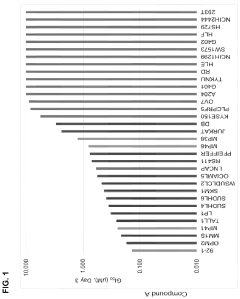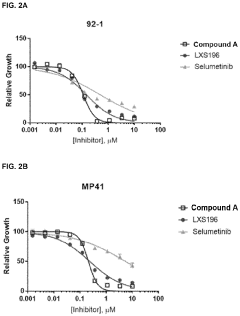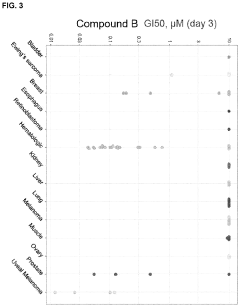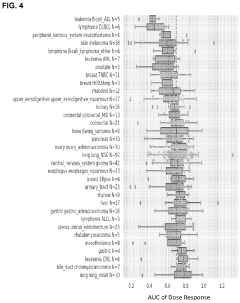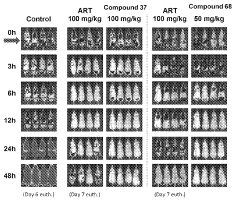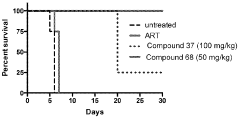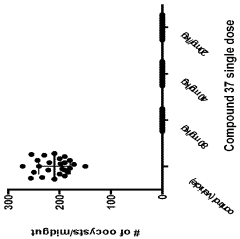How Geometric Isomers Influence Molecular Interactions in Solution Chemistry
AUG 1, 20259 MIN READ
Generate Your Research Report Instantly with AI Agent
Patsnap Eureka helps you evaluate technical feasibility & market potential.
Geometric Isomerism Background and Objectives
Geometric isomerism, a fundamental concept in organic chemistry, has been a subject of intense study since its discovery in the late 19th century. This phenomenon occurs when molecules have the same molecular formula and bonding sequence but differ in the spatial arrangement of their atoms. The study of geometric isomers has evolved significantly over the past century, with major breakthroughs in understanding their structure, properties, and reactivity.
The field of solution chemistry has particularly benefited from advancements in geometric isomerism research. As molecules interact in solution, their spatial arrangement plays a crucial role in determining the nature and strength of these interactions. This interplay between geometric isomerism and molecular interactions in solution has far-reaching implications across various scientific disciplines, including biochemistry, pharmacology, and materials science.
Recent technological advancements, such as high-resolution spectroscopy and computational modeling, have revolutionized our ability to study geometric isomers and their behavior in solution. These tools have enabled researchers to probe the subtle differences in molecular interactions caused by variations in spatial arrangement, leading to a more nuanced understanding of solution chemistry.
The objectives of current research in this field are multifaceted. Firstly, there is a drive to develop more accurate predictive models for how geometric isomers influence molecular interactions in solution. This includes understanding the energetics of isomerization processes and the impact of different solvents on isomer stability and reactivity.
Secondly, researchers aim to exploit the unique properties of geometric isomers to design novel materials and pharmaceuticals. By manipulating the spatial arrangement of molecules, scientists hope to fine-tune their interactions in solution, potentially leading to more effective drugs or advanced functional materials.
Thirdly, there is a growing interest in understanding the role of geometric isomerism in biological systems. Many biomolecules exist as geometric isomers, and their specific spatial arrangements are often crucial for their function. Elucidating how these isomers interact in physiological solutions could provide valuable insights into various biological processes and disease mechanisms.
Lastly, the field is moving towards integrating geometric isomerism studies with other areas of chemistry and physics. This includes exploring how geometric isomers interact with light, potentially leading to new applications in photochemistry and optoelectronics. Additionally, researchers are investigating the interplay between geometric isomerism and other forms of molecular asymmetry, such as chirality, to gain a more comprehensive understanding of molecular behavior in solution.
The field of solution chemistry has particularly benefited from advancements in geometric isomerism research. As molecules interact in solution, their spatial arrangement plays a crucial role in determining the nature and strength of these interactions. This interplay between geometric isomerism and molecular interactions in solution has far-reaching implications across various scientific disciplines, including biochemistry, pharmacology, and materials science.
Recent technological advancements, such as high-resolution spectroscopy and computational modeling, have revolutionized our ability to study geometric isomers and their behavior in solution. These tools have enabled researchers to probe the subtle differences in molecular interactions caused by variations in spatial arrangement, leading to a more nuanced understanding of solution chemistry.
The objectives of current research in this field are multifaceted. Firstly, there is a drive to develop more accurate predictive models for how geometric isomers influence molecular interactions in solution. This includes understanding the energetics of isomerization processes and the impact of different solvents on isomer stability and reactivity.
Secondly, researchers aim to exploit the unique properties of geometric isomers to design novel materials and pharmaceuticals. By manipulating the spatial arrangement of molecules, scientists hope to fine-tune their interactions in solution, potentially leading to more effective drugs or advanced functional materials.
Thirdly, there is a growing interest in understanding the role of geometric isomerism in biological systems. Many biomolecules exist as geometric isomers, and their specific spatial arrangements are often crucial for their function. Elucidating how these isomers interact in physiological solutions could provide valuable insights into various biological processes and disease mechanisms.
Lastly, the field is moving towards integrating geometric isomerism studies with other areas of chemistry and physics. This includes exploring how geometric isomers interact with light, potentially leading to new applications in photochemistry and optoelectronics. Additionally, researchers are investigating the interplay between geometric isomerism and other forms of molecular asymmetry, such as chirality, to gain a more comprehensive understanding of molecular behavior in solution.
Solution Chemistry Market Analysis
The solution chemistry market has experienced significant growth in recent years, driven by increasing demand across various industries such as pharmaceuticals, materials science, and environmental research. The global market for solution chemistry-related products and services is projected to reach substantial figures in the coming years, with a compound annual growth rate outpacing many other scientific sectors.
In the pharmaceutical industry, solution chemistry plays a crucial role in drug development and formulation. The influence of geometric isomers on molecular interactions in solution is particularly relevant in this field, as it can significantly impact drug efficacy and bioavailability. This has led to increased investment in research and development focused on understanding and manipulating these interactions to optimize drug performance.
The materials science sector has also seen a surge in demand for solution chemistry expertise, particularly in the development of advanced materials with specific properties. Geometric isomers and their interactions in solution are critical in areas such as polymer synthesis, nanoparticle fabrication, and the creation of smart materials. This has resulted in a growing market for specialized analytical tools and services dedicated to studying molecular interactions in solution.
Environmental research and remediation efforts have further bolstered the solution chemistry market. The behavior of geometric isomers in aqueous environments is of particular interest in understanding pollutant transport and developing effective cleanup strategies. This has led to increased funding for research projects and the development of new technologies aimed at addressing environmental challenges through solution chemistry approaches.
The academic and research sector continues to be a significant driver of the solution chemistry market, with universities and research institutions investing in advanced equipment and facilities to study molecular interactions in solution. This has created a robust market for analytical instruments, software, and specialized reagents designed for solution chemistry applications.
Geographically, North America and Europe remain the largest markets for solution chemistry products and services, owing to their well-established pharmaceutical and chemical industries. However, the Asia-Pacific region is experiencing the fastest growth, driven by rapid industrialization, increasing research and development expenditure, and growing awareness of the importance of solution chemistry in various applications.
The market is characterized by a mix of large multinational corporations and specialized niche players. Major chemical and pharmaceutical companies are investing heavily in solution chemistry research, while smaller, specialized firms are emerging to provide targeted services and technologies. This diverse ecosystem is fostering innovation and driving the development of new products and methodologies for studying geometric isomers and their interactions in solution.
In the pharmaceutical industry, solution chemistry plays a crucial role in drug development and formulation. The influence of geometric isomers on molecular interactions in solution is particularly relevant in this field, as it can significantly impact drug efficacy and bioavailability. This has led to increased investment in research and development focused on understanding and manipulating these interactions to optimize drug performance.
The materials science sector has also seen a surge in demand for solution chemistry expertise, particularly in the development of advanced materials with specific properties. Geometric isomers and their interactions in solution are critical in areas such as polymer synthesis, nanoparticle fabrication, and the creation of smart materials. This has resulted in a growing market for specialized analytical tools and services dedicated to studying molecular interactions in solution.
Environmental research and remediation efforts have further bolstered the solution chemistry market. The behavior of geometric isomers in aqueous environments is of particular interest in understanding pollutant transport and developing effective cleanup strategies. This has led to increased funding for research projects and the development of new technologies aimed at addressing environmental challenges through solution chemistry approaches.
The academic and research sector continues to be a significant driver of the solution chemistry market, with universities and research institutions investing in advanced equipment and facilities to study molecular interactions in solution. This has created a robust market for analytical instruments, software, and specialized reagents designed for solution chemistry applications.
Geographically, North America and Europe remain the largest markets for solution chemistry products and services, owing to their well-established pharmaceutical and chemical industries. However, the Asia-Pacific region is experiencing the fastest growth, driven by rapid industrialization, increasing research and development expenditure, and growing awareness of the importance of solution chemistry in various applications.
The market is characterized by a mix of large multinational corporations and specialized niche players. Major chemical and pharmaceutical companies are investing heavily in solution chemistry research, while smaller, specialized firms are emerging to provide targeted services and technologies. This diverse ecosystem is fostering innovation and driving the development of new products and methodologies for studying geometric isomers and their interactions in solution.
Current Challenges in Isomer Interaction Studies
The study of geometric isomers and their influence on molecular interactions in solution chemistry faces several significant challenges. One of the primary obstacles is the complexity of isolating and characterizing individual isomers in solution. Geometric isomers often exist in dynamic equilibrium, making it difficult to study their properties and interactions independently. This equilibrium can be influenced by various factors such as temperature, pressure, and solvent properties, further complicating the analysis.
Another challenge lies in the development of accurate computational models to predict isomer behavior in solution. While quantum mechanical calculations can provide insights into the electronic structure and energetics of isolated molecules, accurately modeling the complex interactions between isomers and solvent molecules remains a formidable task. The inclusion of solvent effects, many-body interactions, and entropic contributions in these models is crucial but computationally demanding.
The detection and quantification of isomers in solution also present significant technical hurdles. Traditional spectroscopic techniques often struggle to distinguish between geometric isomers, especially in complex mixtures. Advanced methods such as two-dimensional NMR spectroscopy and time-resolved spectroscopy have shown promise but still have limitations in terms of sensitivity and resolution for certain isomeric systems.
Furthermore, understanding the kinetics and mechanisms of isomerization processes in solution is challenging due to the rapid nature of these transformations. Capturing the transition states and intermediates involved in isomerization reactions requires sophisticated experimental setups and ultrafast spectroscopic techniques, which are not always readily available or applicable to all systems of interest.
The influence of geometric isomers on intermolecular interactions in solution is another area of ongoing research with significant challenges. These interactions can be subtle and highly dependent on the specific molecular structure and solvent environment. Elucidating the relationship between isomeric structure and properties such as solubility, reactivity, and aggregation behavior requires a multidisciplinary approach combining experimental and theoretical methods.
Lastly, the development of strategies to control and manipulate isomer populations in solution remains a significant challenge. While some progress has been made in using external stimuli such as light or pH to induce isomerization, achieving precise control over isomer ratios and their subsequent interactions in complex solution environments is still an active area of research with many unresolved questions.
Another challenge lies in the development of accurate computational models to predict isomer behavior in solution. While quantum mechanical calculations can provide insights into the electronic structure and energetics of isolated molecules, accurately modeling the complex interactions between isomers and solvent molecules remains a formidable task. The inclusion of solvent effects, many-body interactions, and entropic contributions in these models is crucial but computationally demanding.
The detection and quantification of isomers in solution also present significant technical hurdles. Traditional spectroscopic techniques often struggle to distinguish between geometric isomers, especially in complex mixtures. Advanced methods such as two-dimensional NMR spectroscopy and time-resolved spectroscopy have shown promise but still have limitations in terms of sensitivity and resolution for certain isomeric systems.
Furthermore, understanding the kinetics and mechanisms of isomerization processes in solution is challenging due to the rapid nature of these transformations. Capturing the transition states and intermediates involved in isomerization reactions requires sophisticated experimental setups and ultrafast spectroscopic techniques, which are not always readily available or applicable to all systems of interest.
The influence of geometric isomers on intermolecular interactions in solution is another area of ongoing research with significant challenges. These interactions can be subtle and highly dependent on the specific molecular structure and solvent environment. Elucidating the relationship between isomeric structure and properties such as solubility, reactivity, and aggregation behavior requires a multidisciplinary approach combining experimental and theoretical methods.
Lastly, the development of strategies to control and manipulate isomer populations in solution remains a significant challenge. While some progress has been made in using external stimuli such as light or pH to induce isomerization, achieving precise control over isomer ratios and their subsequent interactions in complex solution environments is still an active area of research with many unresolved questions.
Existing Methods for Studying Isomer Interactions
01 Computational methods for analyzing geometric isomers
Advanced computational techniques are employed to study and predict the molecular interactions of geometric isomers. These methods involve quantum mechanical calculations, molecular dynamics simulations, and machine learning algorithms to understand the structural differences and energetic properties of various isomeric forms.- Computational methods for analyzing geometric isomers: Advanced computational techniques are employed to study and predict the molecular interactions of geometric isomers. These methods involve quantum mechanical calculations, molecular dynamics simulations, and machine learning algorithms to understand the structural differences and energetic properties of various isomeric forms.
- Spectroscopic analysis of geometric isomers: Spectroscopic techniques, such as NMR, IR, and Raman spectroscopy, are utilized to investigate the molecular interactions and structural characteristics of geometric isomers. These methods provide valuable insights into the conformational changes and bonding patterns that distinguish different isomeric forms.
- Separation and purification of geometric isomers: Various chromatographic and crystallization techniques are developed to separate and purify geometric isomers. These methods exploit the differences in physical and chemical properties arising from the spatial arrangement of atoms in isomeric molecules, enabling the isolation of specific isomeric forms for further study or application.
- Influence of geometric isomerism on biological activity: Research focuses on understanding how geometric isomerism affects the biological activity of molecules, particularly in pharmaceutical and agrochemical applications. Studies investigate the impact of isomeric forms on receptor binding, enzyme interactions, and overall efficacy of bioactive compounds.
- Geometric isomers in materials science and nanotechnology: The role of geometric isomerism in materials science and nanotechnology is explored, focusing on how different isomeric forms can influence the properties of materials at the molecular and nanoscale levels. This includes studies on self-assembly, molecular machines, and responsive materials based on isomeric switches.
02 Spectroscopic analysis of geometric isomers
Spectroscopic techniques, such as NMR, IR, and Raman spectroscopy, are utilized to investigate the molecular interactions and structural characteristics of geometric isomers. These methods provide valuable insights into the conformational changes and bonding patterns that distinguish different isomeric forms.Expand Specific Solutions03 Synthesis and separation of geometric isomers
Novel synthetic methods and separation techniques are developed to produce and isolate specific geometric isomers. These approaches often involve stereoselective reactions, chromatographic separations, and crystallization processes to obtain pure isomeric forms for further study of their molecular interactions.Expand Specific Solutions04 Biological activity and drug design related to geometric isomers
The impact of geometric isomerism on biological activity is explored, particularly in the context of drug design and development. Understanding the molecular interactions of different geometric isomers helps in optimizing drug efficacy, selectivity, and pharmacokinetic properties.Expand Specific Solutions05 Molecular modeling of geometric isomer interactions
Advanced molecular modeling techniques are employed to simulate and predict the interactions between geometric isomers and their surrounding environment. These models help in understanding the energetics, conformational changes, and reactivity of different isomeric forms in various chemical and biological systems.Expand Specific Solutions
Key Players in Isomer Interaction Research
The field of geometric isomers and their influence on molecular interactions in solution chemistry is in a mature stage of development, with ongoing research focusing on refining understanding and applications. The market size for related technologies and products is substantial, driven by pharmaceutical, chemical, and materials science industries. Companies like Sunshine Lake Pharma, CSPC Zhongqi Pharmaceutical, and Foghorn Therapeutics are at the forefront of leveraging this knowledge for drug development. Academic institutions such as Cornell University and the Broad Institute contribute significantly to fundamental research. The technology's maturity is evident in its widespread application, but there's still room for innovation in areas like drug delivery systems and materials design.
The Broad Institute, Inc.
Technical Solution: The Broad Institute has developed advanced computational methods to study geometric isomers and their influence on molecular interactions in solution chemistry. They utilize machine learning algorithms to predict isomer conformations and their impact on binding affinities[1]. Their approach combines molecular dynamics simulations with experimental data to create accurate models of isomer behavior in various solvents[3]. The institute has also pioneered the use of cryo-electron microscopy to directly observe geometric isomers in solution, providing unprecedented insights into their structural dynamics[5].
Strengths: Cutting-edge computational methods, integration of experimental and theoretical approaches. Weaknesses: High computational costs, potential limitations in modeling complex solvent environments.
Cornell University
Technical Solution: Cornell University researchers have developed a novel spectroscopic technique to study geometric isomers in solution. Their method combines time-resolved Raman spectroscopy with advanced signal processing algorithms to distinguish between different isomeric forms in real-time[2]. They have also created a database of isomer-specific spectral signatures, enabling rapid identification of geometric isomers in complex mixtures[4]. Additionally, Cornell has pioneered the use of microfluidic devices to study isomer interconversion kinetics under precisely controlled solution conditions[6].
Strengths: High-resolution spectroscopic techniques, real-time isomer detection capabilities. Weaknesses: Potential limitations in studying highly dynamic systems, specialized equipment requirements.
Breakthrough Technologies in Isomer Analysis
Compounds and uses thereof
PatentPendingUS20230145003A1
Innovation
- Development of specific compounds that modulate the BAF complex by inhibiting BRG1 and/or BRM activity, which can be used alone or in combination with other pharmaceutically active agents to treat disorders like cancer.
Compounds and methods for the treatment of malaria
PatentInactiveIN202118043692A
Innovation
- Development of specific compounds, such as those represented by Formula I and listed in Table 1, which offer new structural features and functional groups to target malaria parasites effectively, including those resistant to existing drugs.
Environmental Impact of Isomer Interactions
The environmental impact of geometric isomer interactions in solution chemistry is a critical consideration in various fields, including pharmaceuticals, agriculture, and industrial processes. These interactions can significantly influence the fate and behavior of chemicals in the environment, leading to both positive and negative consequences.
Geometric isomers, due to their distinct spatial arrangements, exhibit different physical and chemical properties, which can affect their environmental persistence, bioaccumulation potential, and toxicity. In aquatic environments, the solubility and partitioning behavior of geometric isomers can vary substantially, influencing their distribution between water, sediment, and biota. This differential partitioning can lead to unexpected accumulation patterns and exposure routes for organisms.
The biodegradation rates of geometric isomers often differ, resulting in varying environmental half-lives. Some isomers may be more readily metabolized by microorganisms, while others persist longer in the environment. This disparity can lead to the accumulation of more recalcitrant isomers over time, potentially altering the overall environmental impact of a chemical mixture.
Photochemical reactions in the environment can also be influenced by the geometric configuration of isomers. Certain isomers may be more susceptible to photodegradation, leading to the formation of transformation products with distinct environmental fates and toxicological profiles. These photochemical processes can significantly affect the longevity and distribution of isomers in surface waters and the atmosphere.
The bioaccumulation potential of geometric isomers can vary due to differences in their molecular interactions with biological membranes and cellular components. Some isomers may more readily cross biological barriers, leading to higher bioconcentration factors and potential biomagnification in food chains. This differential bioaccumulation can result in unexpected exposure patterns and ecological impacts.
Ecotoxicological effects of geometric isomers can differ significantly, even for compounds with identical molecular formulas. The spatial arrangement of atoms can influence receptor binding and metabolic processes in organisms, leading to variations in acute and chronic toxicity. This isomer-specific toxicity highlights the importance of considering geometric configuration in environmental risk assessments and regulatory decisions.
In the context of climate change and global environmental challenges, the behavior of geometric isomers under changing environmental conditions becomes increasingly relevant. Alterations in temperature, pH, and salinity can affect the stability and reactivity of isomers, potentially leading to shifts in their environmental distribution and impact. Understanding these dynamics is crucial for predicting long-term environmental consequences and developing effective mitigation strategies.
Geometric isomers, due to their distinct spatial arrangements, exhibit different physical and chemical properties, which can affect their environmental persistence, bioaccumulation potential, and toxicity. In aquatic environments, the solubility and partitioning behavior of geometric isomers can vary substantially, influencing their distribution between water, sediment, and biota. This differential partitioning can lead to unexpected accumulation patterns and exposure routes for organisms.
The biodegradation rates of geometric isomers often differ, resulting in varying environmental half-lives. Some isomers may be more readily metabolized by microorganisms, while others persist longer in the environment. This disparity can lead to the accumulation of more recalcitrant isomers over time, potentially altering the overall environmental impact of a chemical mixture.
Photochemical reactions in the environment can also be influenced by the geometric configuration of isomers. Certain isomers may be more susceptible to photodegradation, leading to the formation of transformation products with distinct environmental fates and toxicological profiles. These photochemical processes can significantly affect the longevity and distribution of isomers in surface waters and the atmosphere.
The bioaccumulation potential of geometric isomers can vary due to differences in their molecular interactions with biological membranes and cellular components. Some isomers may more readily cross biological barriers, leading to higher bioconcentration factors and potential biomagnification in food chains. This differential bioaccumulation can result in unexpected exposure patterns and ecological impacts.
Ecotoxicological effects of geometric isomers can differ significantly, even for compounds with identical molecular formulas. The spatial arrangement of atoms can influence receptor binding and metabolic processes in organisms, leading to variations in acute and chronic toxicity. This isomer-specific toxicity highlights the importance of considering geometric configuration in environmental risk assessments and regulatory decisions.
In the context of climate change and global environmental challenges, the behavior of geometric isomers under changing environmental conditions becomes increasingly relevant. Alterations in temperature, pH, and salinity can affect the stability and reactivity of isomers, potentially leading to shifts in their environmental distribution and impact. Understanding these dynamics is crucial for predicting long-term environmental consequences and developing effective mitigation strategies.
Computational Modeling of Isomer Behavior
Computational modeling has become an indispensable tool in understanding the behavior of geometric isomers in solution chemistry. These models provide valuable insights into how structural differences between isomers influence their molecular interactions and overall chemical properties. Advanced simulation techniques, such as molecular dynamics and quantum mechanical calculations, allow researchers to predict and analyze isomer behavior at the atomic level.
One of the primary advantages of computational modeling in this field is the ability to simulate complex molecular systems that may be challenging or impossible to study experimentally. By incorporating parameters such as solvent effects, temperature, and pressure, these models can accurately represent real-world conditions. This capability is particularly crucial when investigating the subtle differences between geometric isomers, which often exhibit similar physical and chemical properties.
Molecular dynamics simulations have proven especially useful in studying the conformational changes and interactions of geometric isomers in solution. These simulations can track the movement and interactions of individual atoms over time, providing a detailed picture of how isomers behave in different solvents. By analyzing factors such as hydrogen bonding, van der Waals forces, and electrostatic interactions, researchers can gain a deeper understanding of why certain isomers may be more stable or reactive in specific environments.
Quantum mechanical calculations complement molecular dynamics by offering insights into the electronic structure and energetics of geometric isomers. These calculations can predict properties such as bond lengths, angles, and energies with high accuracy. By comparing the calculated properties of different isomers, researchers can identify key structural features that influence their behavior in solution. This information is invaluable for predicting reaction mechanisms, selectivity, and other important aspects of solution chemistry.
Machine learning algorithms are increasingly being integrated into computational models to enhance their predictive power and efficiency. These algorithms can analyze large datasets of isomer properties and interactions, identifying patterns and relationships that may not be immediately apparent to human researchers. This approach has the potential to accelerate the discovery of new isomers with desirable properties and to optimize reaction conditions for specific applications.
As computational power continues to increase, the accuracy and scope of these models are expected to improve significantly. Future developments may include more sophisticated multi-scale modeling techniques that can seamlessly integrate quantum mechanical, molecular dynamics, and continuum approaches. These advancements will enable researchers to study even more complex systems and to make more accurate predictions about the behavior of geometric isomers in solution chemistry.
One of the primary advantages of computational modeling in this field is the ability to simulate complex molecular systems that may be challenging or impossible to study experimentally. By incorporating parameters such as solvent effects, temperature, and pressure, these models can accurately represent real-world conditions. This capability is particularly crucial when investigating the subtle differences between geometric isomers, which often exhibit similar physical and chemical properties.
Molecular dynamics simulations have proven especially useful in studying the conformational changes and interactions of geometric isomers in solution. These simulations can track the movement and interactions of individual atoms over time, providing a detailed picture of how isomers behave in different solvents. By analyzing factors such as hydrogen bonding, van der Waals forces, and electrostatic interactions, researchers can gain a deeper understanding of why certain isomers may be more stable or reactive in specific environments.
Quantum mechanical calculations complement molecular dynamics by offering insights into the electronic structure and energetics of geometric isomers. These calculations can predict properties such as bond lengths, angles, and energies with high accuracy. By comparing the calculated properties of different isomers, researchers can identify key structural features that influence their behavior in solution. This information is invaluable for predicting reaction mechanisms, selectivity, and other important aspects of solution chemistry.
Machine learning algorithms are increasingly being integrated into computational models to enhance their predictive power and efficiency. These algorithms can analyze large datasets of isomer properties and interactions, identifying patterns and relationships that may not be immediately apparent to human researchers. This approach has the potential to accelerate the discovery of new isomers with desirable properties and to optimize reaction conditions for specific applications.
As computational power continues to increase, the accuracy and scope of these models are expected to improve significantly. Future developments may include more sophisticated multi-scale modeling techniques that can seamlessly integrate quantum mechanical, molecular dynamics, and continuum approaches. These advancements will enable researchers to study even more complex systems and to make more accurate predictions about the behavior of geometric isomers in solution chemistry.
Unlock deeper insights with Patsnap Eureka Quick Research — get a full tech report to explore trends and direct your research. Try now!
Generate Your Research Report Instantly with AI Agent
Supercharge your innovation with Patsnap Eureka AI Agent Platform!
